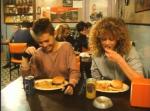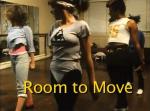AustLit
The material on this page is available to AustLit subscribers. If you are a subscriber or are from a subscribing organisation, please log in to gain full access. To explore options for subscribing to this unique teaching, research, and publishing resource for Australian culture and storytelling, please contact us or find out more.
Latest Issues
AbstractHistoryArchive Description
Room to Move is a story about an unlikely friendship between two girls: one a sporting champion, the other a dancer and an outsider. Carol is a top runner with great potential, and her father runs her training program day and night. When the punk-influenced Angie arrives at the school, the two become friends. They give each other lots of support and get up to things that Carol has desired but never had the courage to do, including learning how to dance. She begins to rebel, but an all-important race is coming up. Carol has to make a very important choice.
(Source: Australian Screen)
Notes
-
Telemovie.
-
The promotional trailer for this episode is available to view via YouTube: http://www.youtube.com/watch?v=0pp3Ubt38D4 (Sighted: 14/9/2012)
Publication Details of Only Known VersionEarliest 2 Known Versions of
Last amended 2 May 2017 15:45:46
Export this record





